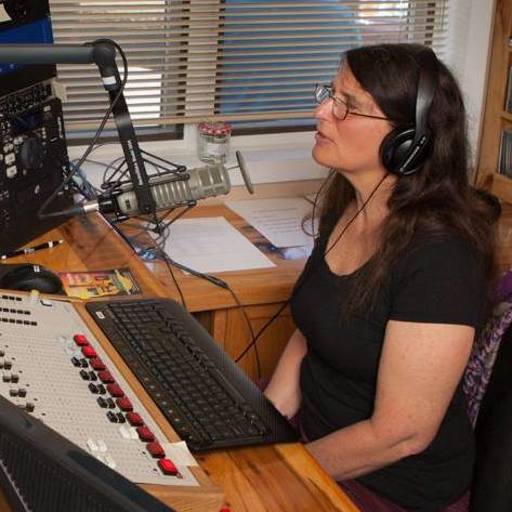
Helicopters sporting long appendages are flying over some rural areas of the country, including here in Colorado. Many of them are part of the U.S. Geological Survey’s Earth MRI program aimed at finding new mineral resources by mapping both the landscape and what lies underground.
The project has had bipartisan support. It started under the first Trump administration and ramped up under Biden, with hundreds of millions of dollars in funding.
Earlier this year, President Trump referred to the project in his address to Congress when he said, “I will also take historic action to dramatically expand production of critical minerals and rare earths here in the USA.”
The USGS has mapped the area before, and back in the 1800s, miners were prospecting for silver, gold and other materials in the mountains and valleys of Southern Colorado. But now, new work is underway to improve and expand the existing geological data for the region.

Mapping what’s underground from the air
Earlier this year, a blue helicopter took off at various times from small airports in Chaffee, Fremont and Custer counties. A long boom attached to the nose of the craft carried a device that read the Earth's magnetic field. Other instruments in the cockpit took different measurements as the pilot flew a grid pattern low over the landscape.
The data collected by the gadgetry in the helicopter eventually gets to Tien Grauch, a Colorado-based USGS geophysicist studying the region.
“The idea is to do geologic mapping from the air," she said. “We are doing it indirectly by measuring various fields. Those properties tell us something about the rock types that are down there.”

Grauch said this new data will give them far more detailed geological maps than previously available. She said along with looking for minerals, there are other applications. For example, trying to understand where the groundwater flows on the subsurface, landside hazards, geothermal exploration.
Why spend hundreds of millions of dollars to search for critical minerals?
Jamey Jones sets the strategy for the Earth MRI project at USGS.
“The decisions that we're charged with making right now relate to critical mineral resources,” he said. “Do we have domestic supplies of critical mineral resources that we know about? Are there potential critical mineral resources that we don't know about?”
Jones said interest in rare earth elements and critical minerals has grown because they’re essential in modern technology and have national security applications. He said there is one operating rare earth element mine in the western United States, but there’s a push to find more domestic sources.
“But otherwise China is the dominant player in the rare earth market,” he said. “They have shown through export controls that they are willing to manipulate that market to control the availability of those materials. That was the set of commodities that sparked some of the original concern and recognition that we are dependent on other nations for our essential supplies of mineral commodities.”
The administration has also tasked the Earth MRI project with helping to determine if the waste left over from old or existing mines contains some of these materials.
“Mine waste presents an opportunity to perhaps look at something that's already been concentrated,” he said. “It's easier to move.”
But he says quantities could be small.
Not everyone is behind this national effort
Not everyone agrees with this overall push to look for critical minerals and rare earth elements. Aaron Mintzes is with Earthworks, a national group focused on preventing the adverse impacts of mineral and energy development.

“What we have is an absolute, unjustified minerals rush,” he said. “That is fomented by a purported but false emergency fabricated by the president and that's perpetuating a series of executive orders.”
Mintzes said those orders relate to some recent proposed mining projects that have had very short public comment periods — as little as a couple of weeks for a uranium mine in Utah.
“What we need is an update to our mining statute, which is from 1872, and is deeply unfair to communities directly impacted by mines, particularly indigenous communities,” he said. “It's very difficult to stop a mine. The government can rarely say no to a mine.”
Mintzes conceded that China has captured much of the critical minerals market for a long time. But, he said, the Earth MRI program itself shows that these materials can be found elsewhere, including in mine waste, and he said that too needs better regulation.
Ten minerals added to the critical list
President Trump is also requesting another $137 million to search for minerals and energy resources domestically.
Meanwhile, the Department of the Interior published an updated 2025 List of Critical Minerals earlier this month, “outlining 60 minerals vital to the U.S. economy and national security that face potential risks from disrupted supply chains.”
Jones said they're working on scheduling new projects for next year.
Industry, scientists and others will use data from Earth MRI to evaluate whether the resources can be economically obtained here in the United States.
Editor's note: This is the first of a two-part series. Come back tomorrow to dig deeper into what that helicopter is doing and how the science of this search for minerals works.
- Finding underground water from 100 feet up in the air: How aerial sensing systems chart El Paso County's natural resources
- The Spanish Peaks in Southern Colorado are a piece of the geological puzzle of why the High Plains are so high
- Aquifers: The groundwater in Colorado’s wells and how it gets there
- Do you know where your well water comes from? A look into aquifers in Southern Colorado









